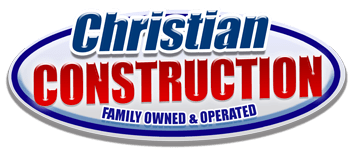When it comes to residential roofing, not all designs are created equal. The slope of your roof – essentially, its angle – has a significant bearing on its performance and longevity. Of particular concern is the tendency for low-sloped roofs to be more susceptible to leaks compared to their steeper counterparts. Understanding why this is the case is crucial for homeowners who are looking to maximize their investment in a roofing system.
Understanding Roof Slope and Its Importance
Roof slope is determined by the rise in height for every twelve inches of horizontal distance, often expressed as a ratio like 4:12 or 6:12. In essence, it indicates how steep or flat your roof is. The slope is not merely an aesthetic choice; it influences how effectively your roof can shed water, withstand weather elements, and even impact energy efficiency. One way that it can have a fairly profound impact is on vulnerability to roof leaks.
Why Low-Sloped Roofs Are More Vulnerable to Leaks
So called “Low Sloped Roofs” are far more likely to run into roof leaks than other type of roofing slopes. Low-sloped roofs, typically having a slope of 2:12 or less, are more prone to leaks for several reasons:
- Inadequate Water Drainage – Due to their flat nature, low-sloped roofs do not facilitate quick water runoff. This leads to water pooling and, subsequently, increased chances of leaks.
- Accumulation of Debris – The relatively flat surface allows for debris like leaves, twigs, and dust to gather more easily, creating blockages that can trap water and contribute to leaks.
- Seam Vulnerabilities – Low-sloped roofs often have more seams and joints due to their construction, providing more opportunities for water to seep in.
- Weather Impact – While all roofs are exposed to the elements, low-sloped roofs bear the brunt more severely. With less slope to divert wind and rain, these roofs are often subjected to higher pressures that can exacerbate wear and tear.
Low slope roofing is not terribly common here in Staten Island, but it is still found in homes throughout the region depending on the design practices of the builder and the age of the home.
Identifying Signs of Leaks in Low-Sloped Roofs
Early detection of roof leaks can mitigate damage and save on repair costs. Here are some signs to look for:
- Water stains on ceilings or walls
- Unexplained mold or mildew growth
- Bubbling or peeling paint near the roofline
- Accumulated water or puddles on the roof surface
During a roof cleaning or gutter maintenance visit, we can take a look at your roof and see if there are signs of leaks or the potential for leaks. If there are, we can inform you of next steps.
Mitigating the Risk of Leaks in Low-Sloped Roofs
Preventive measures are particularly crucial for homeowners with low-sloped roofs. Below are some steps to help mitigate the risk of leaks:
- Regular Inspection – More frequent inspections are necessary to spot any signs of wear, pooling water, or debris accumulation.
- Drainage Systems – Ensure that your drainage system is well-maintained and devoid of blockages to facilitate better water runoff.
- Quality Roofing Material – Opt for high-performance roofing materials designed to resist water penetration, such as membrane roofing systems.
- Timely Repairs – At the first sign of trouble, engage professional services for immediate repair to prevent exacerbating the problem.
Low-sloped roofs come with their own set of challenges, primarily the increased susceptibility to leaks. By understanding the unique aspects that contribute to this vulnerability, homeowners can take proactive measures to mitigate risks. While this guide offers a thorough look at the issues at hand, every home has its specific requirements. Therefore, expert consultation, like the services provided by Christian Construction, is invaluable for tailored solutions that address your particular needs.

